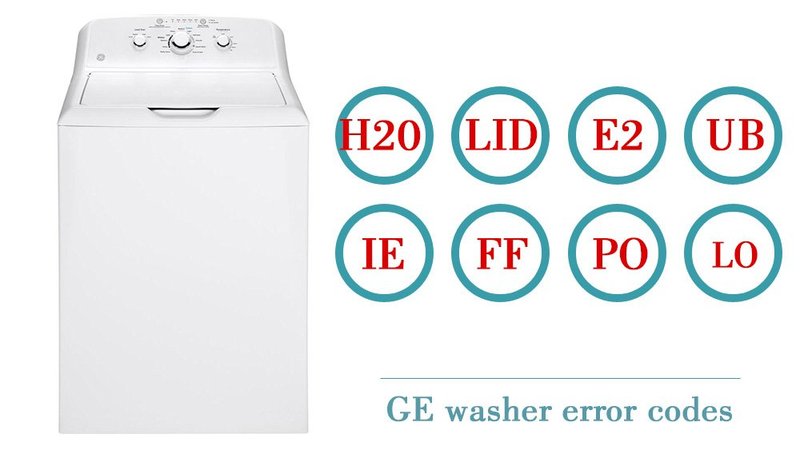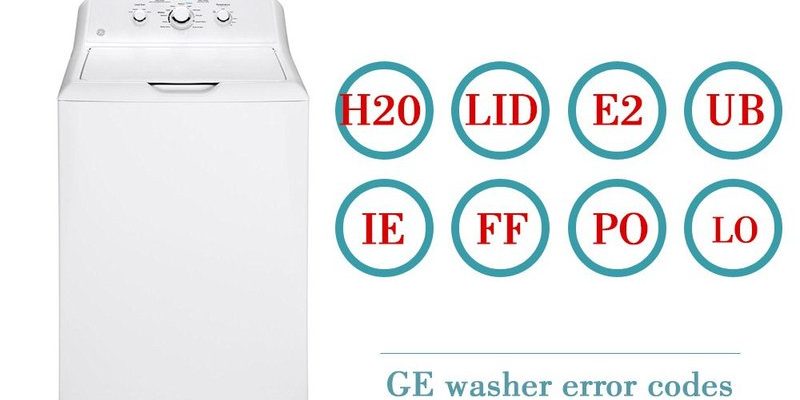
Here’s the deal: ignoring error codes on your washing machine is a bit like ignoring the check engine light in your car. Sure, you could keep driving, but it might lead to more significant issues down the road. The “LE” error code specifically relates to a problem with the washing machine’s motor, indicating that something isn’t quite right with how it’s spinning or not spinning at all. Like a runner trying to sprint with a sprained ankle, your washing machine will struggle to work effectively if this problem is ignored.
Understanding the “LE” Error Code
Let’s dive deeper into what this error code really means. The “LE” in your GE washing machine stands for “Locked Motor Error”. Essentially, it suggests that the washing machine’s motor is having difficulty doing its job. You might be wondering, why does this happen? It’s often due to issues like overloading the washer, blockages, or problems with the motor itself.
An overloaded machine is one of the most common causes. Imagine trying to carry too many groceries at once — it’s hard to balance everything, right? Similarly, a washing machine bogged down with too many clothes struggles to spin efficiently. Sometimes, debris or foreign objects like coins or buttons can get lodged in the drum, causing it to stop abruptly. Lastly, wear and tear over time can also lead the motor to malfunction.
The “LE” error is GE’s way of alerting you to these issues, much like a smoke alarm signals a potential fire hazard. Ignoring it might result in the motor overheating, increased wear and tear, or even a burnt-out motor that’ll cost a pretty penny to replace. So, while it might be tempting to hit that “cancel” button and walk away, addressing the issue sooner rather than later is usually the best move.
Steps to Resolve the “LE” Error
If your washing machine has served up an “LE” error, don’t panic. You can usually resolve the issue with a bit of troubleshooting. First, try to lighten the load. If you’ve overstuffed the drum, taking out a few items can sometimes do the trick. Remember, washing machines are a bit like a well-tuned orchestra — they perform best when everything’s balanced just right.
If lightening the load doesn’t work, it’s time to check for blockages. Open the machine and inspect the drum for any objects that shouldn’t be there. It’s surprising how often things like socks or small items can sneak between the drum and the door. These rogue items can cause the drum to lock up like a traffic jam during rush hour.
If you’ve tried the above steps and the error persists, it might be time to inspect the motor. Now, this is where things can get a bit technical, so if you’re not comfortable, calling in a professional is a wise choice. They might need to look at the motor’s wiring or the control board — tasks that require a bit of technical know-how.
Once you’ve addressed the immediate issue, try running a test cycle with a small load to ensure everything’s back to normal. If the error doesn’t return, you’re likely in the clear. Otherwise, seeking professional help is your best bet to avoid further damage.
Preventing Future “LE” Errors
Prevention is better than cure, and this holds true for washing machine maintenance as well. One of the easiest ways to prevent the “LE” error is to avoid overloading your machine. Think of your washing machine like a merry-go-round — it’s fun and efficient with just the right number of riders, but too many can slow it down and cause problems.
Regularly check your pockets and remove any loose items before tossing clothes into the wash. Those nickels and dimes may seem harmless, but they’re notorious for causing blockages. Conducting periodic checks and clearing any debris from the drum can keep things running smoothly.
Finally, allow your machine to reset between cycles if you’ve faced an error. Sometimes, turning the power off and on again allows the system to recalibrate and operate effectively. Just remember, while power cycling can help, persistent errors should not be ignored, as they might indicate underlying issues that need a professional touch.
By addressing the “LE” error promptly and taking preventative measures, you can keep your GE washing machine in tip-top shape, making laundry day a breeze instead of a burden. Remember, when it comes to error codes, a little attention now can save you from a heap of trouble — and cost — later on.
